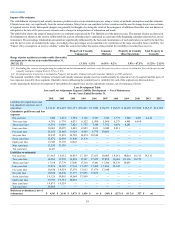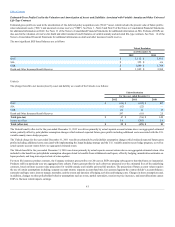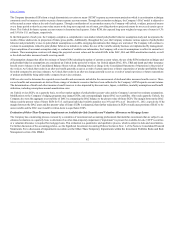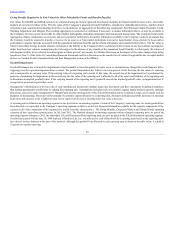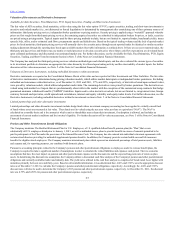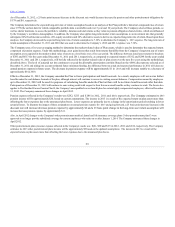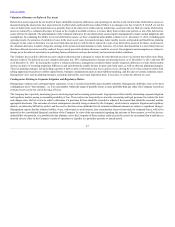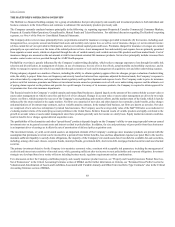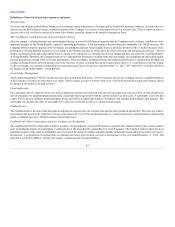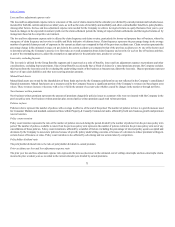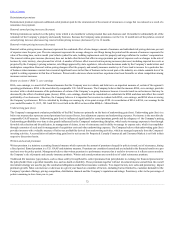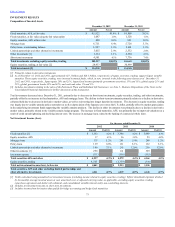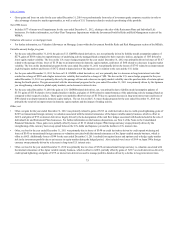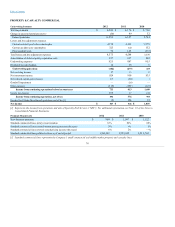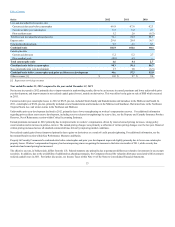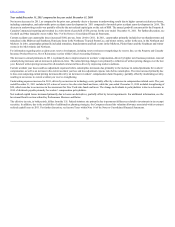The Hartford 2012 Annual Report Download - page 69
Download and view the complete annual report
Please find page 69 of the 2012 The Hartford annual report below. You can navigate through the pages in the report by either clicking on the pages listed below, or by using the keyword search tool below to find specific information within the annual report.
Table of Contents
The Hartford is a financial holding company for a group of subsidiaries that provide property and casualty and investment products to both individual and
business customers in the United States and continues to administer life and annuity products previously sold.
The Company currently conducts business principally in the following six reporting segments Property & Casualty Commercial, Consumer Markets,
Property & Casualty Other Operations, Group Benefits, Mutual Funds and Talcott Resolution. For additional discussion regarding The Hartford’s reporting
segments, see Note 4 of the Notes to Consolidated Financial Statements.
The Company derives its revenues principally from: (a) premiums earned for insurance coverages provided to insureds; (b) fee income, including asset
management fees, on separate account and mutual fund assets and mortality and expense fees, as well as cost of insurance charges; (c) net investment income;
(d) fees earned for services provided to third parties; and (e) net realized capital gains and losses. Premiums charged for insurance coverages are earned
principally on a pro rata basis over the terms of the related policies in-force. Asset management fees and mortality and expense fees are primarily generated
from separate account assets, which are deposited through the sale of variable annuity and variable universal life products and from mutual funds. Cost of
insurance charges are assessed on the net amount at risk for investment-oriented life insurance products. Service fees principally include revenues from
member contact center services provided through the AARP Health program.
Profitability over time is greatly influenced by the Company’s underwriting discipline, which seeks to manage exposure to loss through favorable risk
selection and diversification, its management of claims, its use of reinsurance, the size of its in force block, actual mortality and morbidity experience, and its
ability to manage its expense ratio which it accomplishes through economies of scale and its management of acquisition costs and other underwriting expenses.
Pricing adequacy depends on a number of factors, including the ability to obtain regulatory approval for rate changes, proper evaluation of underwriting
risks, the ability to project future loss cost frequency and severity based on historical loss experience adjusted for known trends, the Company’s response to
rate actions taken by competitors, and expectations about regulatory and legal developments and expense levels. The Company seeks to price its insurance
policies such that insurance premiums and future net investment income earned on premiums received will cover underwriting expenses and the ultimate cost
of paying claims reported on the policies and provide for a profit margin. For many of its insurance products, the Company is required to obtain approval for
its premium rates from state insurance departments.
The financial results in the Company’s variable annuity and mutual fund businesses, depend largely on the amount of the contract holder account value or
assets under management on which it earns fees and the level of fees charged. Changes in account value or assets under management are driven by two main
factors: net flows, which measure the success of the Company’s asset gathering and retention efforts, and the market return of the funds, which is heavily
influenced by the return realized in the equity markets. Net flows are comprised of new sales and other deposits less surrenders, death benefits, policy charges
and annuitizations of investment type contracts, such as variable annuity contracts. In the mutual fund business, net flows are known as net sales. Net sales
are comprised of new sales less redemptions by mutual fund customers. The Company uses the average daily value of the S&P 500 Index as an indicator for
evaluating market returns of the underlying account portfolios in the United States. Relative financial results of variable products are highly correlated to the
growth in account values or assets under management since these products generally earn fee income on a daily basis. Equity market movements could also
result in benefits for or charges against deferred acquisition costs.
The profitability of fixed annuities and other “spread-based” products depends largely on the Company’s ability to earn target spreads between earned
investment rates on its general account assets and interest credited to policyholders. In addition, the size and persistency of gross profits from these businesses
is an important driver of earnings as it affects the rate of amortization of deferred policy acquisition costs.
The investment return, or yield, on invested assets is an important element of the Company’s earnings since insurance products are priced with the
assumption that premiums received can be invested for a period of time before benefits, loss and loss adjustment expenses are paid. Due to the need to
maintain sufficient liquidity to satisfy claim obligations, the majority of the Company’s invested assets have been held in available-for-sale securities,
including, among other asset classes, corporate bonds, municipal bonds, government debt, short-term debt, mortgage-backed securities and asset-backed
securities.
The primary investment objective for the Company is to maximize economic value, consistent with acceptable risk parameters, including the management of
credit risk and interest rate sensitivity of invested assets, while generating sufficient after-tax income to meet policyholder and corporate obligations. Investment
strategies are developed based on a variety of factors including business needs, regulatory requirements and tax considerations.
For a discussion on how the Company establishes property and casualty insurance product reserves, see “Property and Casualty Insurance Product Reserves,
Net of Reinsurance” in the Critical Accounting Estimates section of MD&A and for further information on Unlocks, see “Estimated Gross Profits Used in the
Valuation and Amortization of Assets and Liabilities Associated with Variable Annuity and Other Universal Life-Type Contracts” also in the Critical
Accounting Estimates section of MD&A.
68


